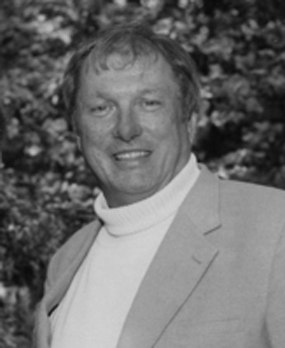Neil Robert Lincoln:
How he has transformed the scene
A pioneer of supercomputers: The brains behind the computing world
The computers we use today are not only fast, but also fit on our desktops, in our laps and even in our pockets. During the late 1960s through the early 1980s, modern personal computers didn't exist, and supercomputers ruled. The fastest, most powerful computers cost millions of dollars, were housed in large, air-conditioned rooms and were created by brilliant minds. Neil Lincoln was one such genius who achieved international recognition for his high-performance supercomputers.
Lincoln was born in Stockton, Calif., and raised in Gustine, Calif. He received his B.S. degree in electrical engineering from the University of California, Berkeley in 1961, then served in the U.S. Marine Corps. He began his 40-year technology career with United Research Services. In 1967, he moved to Minnesota to work for Control Data, where he gained worldwide prominence as the lead architect and engineer creating the STAR-100 supercomputer — one of the first machines to use a vector processor – and the CYBER 205.
Canoeing and computers
His son, Sean, fondly remembers when his dad designed the CYBER 205 — on a canoe trip.
"Though I was fairly young at the time, I was with him when he came up with his part of the design of the CYBER 205, because he did it in his head while he was paddling around the Boundary Waters," Sean recalls. "A couple of times on the trip, he seemed a little distant, which was unusual. I finally asked him if everything was ok and he said, 'just working something out; almost got it.' I didn't think anything more of it until we got back home and, rather than help unpack, he went into the house and got a piece of paper and pencil and started scribbling something." Turns out he was writing down the architecture for the next computer: the CYBER 205.
For Lincoln, computer engineering was a calling, not a task or an assignment. In 1983, Lincoln co-founded ETA Systems, a St. Paul company spun off from Control Data, where he continued his supercomputer work as chief architect for the ETA-10, which became the fastest supercomputer in 1990.
As supercomputing architectures changed and ETA Systems closed in 1989, Lincoln continued advancing. That same year, he founded SSESCO, now known as WindLogics, supporting the wind power industry using weather modeling and forecasting. His vision was to hire the newly unemployed technical people from ETA and put them to work for other companies around the country. His efforts not only transitioned several highly skilled workers to good jobs, but also spawned several companies still in operation today.
A true leader
During long days of working through a complicated technology problem, Lincoln would find ways to lighten the atmosphere with stories or runs to the local store for his trademark spicy foods, chips or beverage. The distractions of light-hearted fun allowed the minds involved to break from a path that may have been headed for a dead end, and then return with a fresh approach to the situation. With a team one-quarter the size larger competitors used to attempt similar feats, Lincoln and his teams produced some of the world's highest performing and most innovative computers on schedules the big companies couldn't match.
Lincoln was an imposing figure, a bigger-than-life person, according to several of his colleagues. At the same time, he was humble, with little interest in pomp and circumstance. He was known for never wearing a suit and tie. Instead, he wore his "Shazaam Suit" — a turtleneck and blazer — believing that wearing a tie would "block the blood flow to the brain and dampen or cut off creativity." For Lincoln, work was play: He had fun inventing new ways to solve the biggest, most audacious puzzles of computer creation. He didn't talk of doing a job, he talked of changing the world with high-performance computing — and that he did.
Honors
Lincoln died on Jan. 26, 2007, at age 69. He was a member of the American Institute of Astronautics and Aeronautics and holds nine U.S. patents for computer hardware. He was a Distinguished Lecturer of the Institute of Electronics and Electrical Engineers, a National Lecturer of the Association for Computer Machinery and on the Advisory Committee on Science and Technology Centers for the National Science Foundation.

